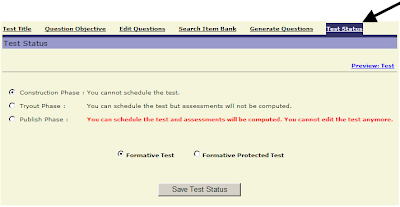 This is because the DL score, and the student’s associated mastery level, provides a much better picture of a student’s ability. A raw score will simply tell a user what a student got right and what a student got wrong. The DL score factors in, not only what items a student got right and wrong, but also the difficulty and discrimination value (how well does this item discriminate between students of different ability levels) of the items.
This is because the DL score, and the student’s associated mastery level, provides a much better picture of a student’s ability. A raw score will simply tell a user what a student got right and what a student got wrong. The DL score factors in, not only what items a student got right and wrong, but also the difficulty and discrimination value (how well does this item discriminate between students of different ability levels) of the items.When a student takes an ATI Benchmark Assessment, they will earn a particular DL score. A DL score is a score that takes the relative difficulty of the assessment into consideration. DL scores on two assessments can be compared in a meaningful way whereas raw scores cannot. For example, 70% correct on a very easy assessment does not mean the same thing as 70% correct on a very difficult assessment. However, a DL (scale) score of 954 on one assessment means the same thing as a DL score of 954 on another assessment, as long as the two assessments have been placed on the same scale. The particular DL score a student earns places them in a particular mastery category. Each state has its own mastery categories (Below the Standard/Unsatisfactory, Approaches the Standard/Partially Proficient, Meets the Standard/Proficient, Exceeds the Standard/Advanced) but they are similar in nature. For example:

Cut scores are then established to determine which Mastery category a student will be placed based on his or her performance on the assessment. The cut scores that define the mastery categories are established for Bencmark 1 using equipercentile equating to align students’ scores to their scores on last year’s state assessment results. The cut scores on all other assessments administered in a school year are established based on the amount of growth in terms of scale scores that is expected from one benchmark to another.
What does this mean for the user? Users can rely on DL scores and their associated mastery catagories, to help identify students to target for interventions, even after one benchmark assessment is given. A teacher’s goal should be to see an increse in DL scores (and mastery catagories) as the year progresses and students learn more of the standards. To acheive this goal, teachers will want to analyze the Class Development Profile Grid, Item Analysis and Risk-Level Report to identified standards on which to focus their re-teaching instruction. Click here to learn more about how these reports can assist with interventions.





















 Students are classified into the different levels of risk according to their performance on a series of benchmark assessments. This example refers to the same three 4th grade math assessments that were considered earlier. Students are classified as being “On Course” if they scored above the cut score for “meets” (or “proficient” in many other states) on all three benchmark assessments. If they fell below that cut score for one assessment, they are classified as being at “Low Risk”. If they fell below on two of the three assessments, they are at “Moderate Risk”, and students who never scored above the critical cut score are classified as being at “High Risk”. Kerridan’s blog illustrates how to use this information to plan interventions.
Students are classified into the different levels of risk according to their performance on a series of benchmark assessments. This example refers to the same three 4th grade math assessments that were considered earlier. Students are classified as being “On Course” if they scored above the cut score for “meets” (or “proficient” in many other states) on all three benchmark assessments. If they fell below that cut score for one assessment, they are classified as being at “Low Risk”. If they fell below on two of the three assessments, they are at “Moderate Risk”, and students who never scored above the critical cut score are classified as being at “High Risk”. Kerridan’s blog illustrates how to use this information to plan interventions.
 Once you have identified a group of students to work with, you will be presented with an intervention strategy for that group of students. Galileo will organize all of the standards tested into steps for re-teaching. Determine which instructional step you’d like to focus on. Then click on the Assignments button to see recommended Instructional Dialogs for each of the state standards that make up that step of the intervention strategy.
Once you have identified a group of students to work with, you will be presented with an intervention strategy for that group of students. Galileo will organize all of the standards tested into steps for re-teaching. Determine which instructional step you’d like to focus on. Then click on the Assignments button to see recommended Instructional Dialogs for each of the state standards that make up that step of the intervention strategy.
